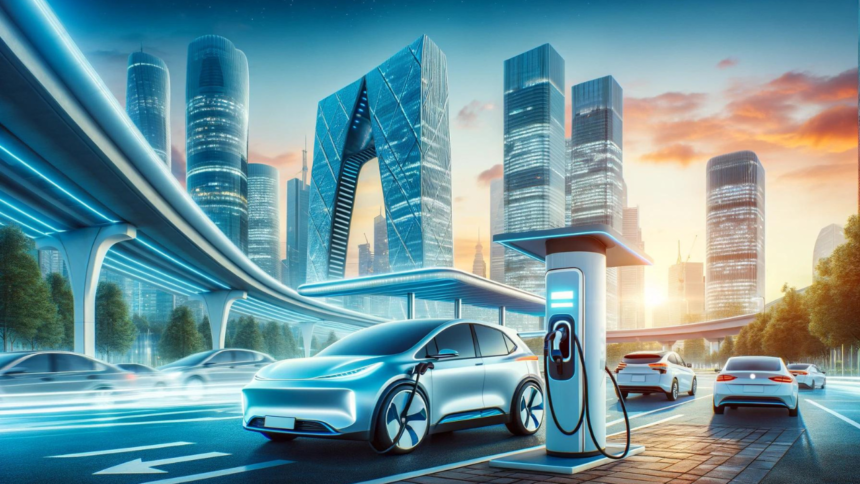The automotive industry is at a pivotal moment as it shifts towards sustainable transportation solutions, with electric vehicles (EVs) emerging as a frontrunner in this transformative journey. The future of electric vehicles promises innovations in technology, addresses various challenges, and holds the potential for significant global impact on environmental sustainability and energy independence. This article explores the rapid evolution of EVs, advancements in battery technology, infrastructure development, and the broader implications of widespread EV adoption on a global scale.
Advancements in Battery Technology
Central to the growth of electric vehicles are advancements in battery technology, which have significantly improved energy storage capacity, charging speeds, and overall performance. Lithium-ion batteries, the current standard for EVs, continue to undergo enhancements in energy density and cost reduction. Innovations in solid-state batteries and other emerging technologies hold promise for further boosting range, durability, and safety of EV batteries.
Energy Density and Range:
Higher energy density batteries allow for extended driving ranges on a single charge, addressing one of the primary concerns of potential EV adopters—range anxiety. Modern EVs can now travel hundreds of miles on a single charge, approaching or even exceeding the range of conventional gasoline-powered vehicles.
Charging Infrastructure:
Infrastructure development plays a crucial role in supporting the widespread adoption of electric vehicles. Governments, private companies, and electric utilities are investing in expanding charging networks, including fast-charging stations that can recharge EV batteries to 80% capacity in under 30 minutes. Initiatives like the European Union’s Charging Network Deployment Initiative aim to establish a comprehensive charging infrastructure across Europe by 2025.
Environmental Impact:
The environmental benefits of electric vehicles are substantial, particularly when compared to internal combustion engine vehicles. EVs produce zero tailpipe emissions, reducing air pollution and greenhouse gas emissions that contribute to climate change. The adoption of EVs is seen as a key strategy in achieving global climate goals outlined in the Paris Agreement and other international accords.
Challenges Facing Electric Vehicles
Despite the promising advancements, electric vehicles still face several challenges that need to be addressed for broader adoption and market penetration.
Cost and Affordability:
The upfront cost of electric vehicles remains higher than traditional gasoline-powered cars, primarily due to the cost of batteries. While prices have been decreasing over the years, further reductions through economies of scale and technological advancements are needed to improve affordability.
Charging Infrastructure:
The availability and accessibility of charging infrastructure vary significantly across regions and countries. Range anxiety, or the fear of running out of battery charge with limited charging options, remains a barrier to widespread EV adoption. Governments and private entities must continue to invest in expanding and standardizing charging networks.
Battery Recycling and Resource Sustainability:
The production and disposal of EV batteries raise concerns about resource sustainability and environmental impact. Developing efficient battery recycling technologies and establishing closed-loop recycling processes will be essential to minimize waste and maximize the reuse of valuable materials like lithium, cobalt, and nickel.
Consumer Perceptions and Education:
Educating consumers about the benefits of electric vehicles, dispelling myths about range limitations and charging infrastructure, and addressing concerns about battery life and maintenance are critical for increasing consumer confidence and adoption rates.
Government Policies and Market Trends
Government Incentives: Many governments worldwide offer incentives such as tax credits, rebates, and subsidies to promote the purchase of electric vehicles and stimulate market demand. These incentives aim to accelerate the transition to cleaner transportation alternatives and support the growth of EV infrastructure.
Regulatory Standards:
Regulatory standards and emissions regulations play a significant role in shaping the automotive industry’s shift towards electric vehicles. Countries and regions are implementing stricter emission standards and setting targets for reducing carbon emissions, prompting automakers to accelerate their EV development efforts.
Automotive Industry Shift:
Major automakers are increasingly investing in electric vehicle technology and expanding their EV product lines. Some companies have announced plans to phase out internal combustion engine vehicles entirely in favor of electric and hybrid models in the coming decades.
Global Impact of Electric Vehicles
The widespread adoption of electric vehicles has the potential to have profound global impacts across multiple dimensions:
Environmental Benefits:
By reducing reliance on fossil fuels and lowering emissions, electric vehicles contribute to improving air quality and mitigating climate change. Transitioning to electric mobility supports global efforts to achieve carbon neutrality and sustainable development goals.
Energy Independence:
Electric vehicles can help reduce dependence on imported oil and enhance energy security by utilizing domestically produced electricity from renewable sources such as wind, solar, and hydropower.
Economic Opportunities:
The shift towards electric vehicles presents opportunities for innovation, job creation in the clean energy sector, and economic growth. Countries and regions that lead in EV adoption and manufacturing stand to benefit from a competitive advantage in the global automotive market.
Urban Planning and Mobility:
Electric vehicles are driving discussions around urban planning and sustainable mobility solutions. Integrated transportation systems, smart city initiatives, and policies promoting public transit and active transportation are part of broader efforts to create livable, low-carbon cities.
Conclusion
In conclusion, the future of electric vehicles represents a transformative shift towards sustainable transportation solutions that promise innovations, address challenges, and have significant global impact. Advancements in battery technology, expansion of charging infrastructure, supportive government policies, and shifts in consumer preferences are driving the rapid adoption of EVs worldwide. While challenges such as cost, charging infrastructure, and battery sustainability remain, ongoing efforts by governments, industries, and stakeholders are paving the way for a cleaner, greener automotive future. As electric vehicles continue to evolve and gain traction, their role in achieving environmental sustainability, promoting energy independence, and reshaping the global automotive landscape will only become more pronounced.







